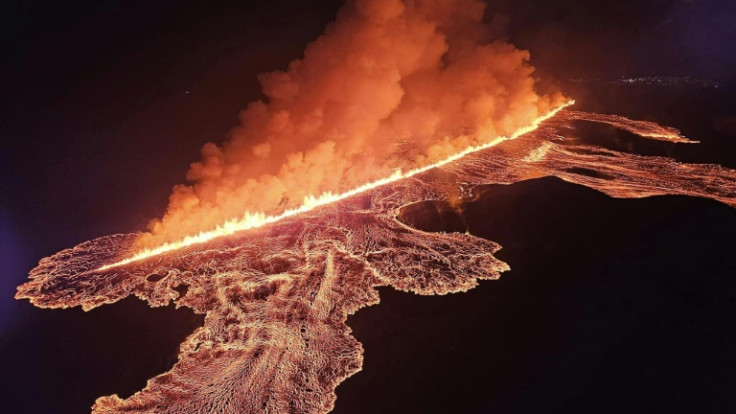
Icelandic authorities said Friday that a second fissure had formed on the southwestern Reykjanes peninsula after lava started spewing forth for the sixth time in the region since December.
After weeks of warnings, the Icelandic Meteorological Office (IMO) said Thursday that a new eruption had started at 9:26 pm (2126 GMT) that evening, following a series of earthquakes.
Video images showed orange lava bursting out of a long fissure, which the IMO estimated to be 3.9 kilometres (2.4 miles).
Early Friday, the IMO announced on social media that a second fissure had opened up to the north of the original one.
However, it said the volcanic activity mostly remained on the first crack.
The weather agency, which also monitors geological events, had previously reported that there was "considerable seismic activity" at the northern end of the fissure.
About an hour after the eruption started an earthquake with a magnitude of 4.1 was recorded in the area.
This is the sixth eruption to hit the area since December, coming just two months after the end of a previous eruption that lasted more than three weeks.
The chief of police of the Sudurnes region, Ulfar Ludviksson, told Icelandic media that the evacuation of the nearby fishing village of Grindavik had gone well.
He added that 22 or 23 houses in the village were currently occupied.
Most of Grindavik's 4,000 residents had evacuated in November, prior to a December eruption, and while residents have since been allowed to return in between eruptions, only a few have opted to stay overnight.
According to the IMO, there was no lava flowing towards Grindavik in the latest eruption.
Iceland's famed Blue Lagoon thermal spa tourist attraction said late Thursday that it had taken "the precautionary measure of evacuating and temporarily closing all our operational units."
The Reykjanes peninsula had not experienced an eruption for eight centuries until March 2021.
Further eruptions occurred in August 2022 and in July and December 2023, leading volcanologists to warn that a new era of seismic activity had begun in the region.
Iceland is home to 33 active volcano systems, the highest number in Europe.
It straddles the Mid-Atlantic Ridge, a crack in the ocean floor separating the Eurasian and North American tectonic plates.







